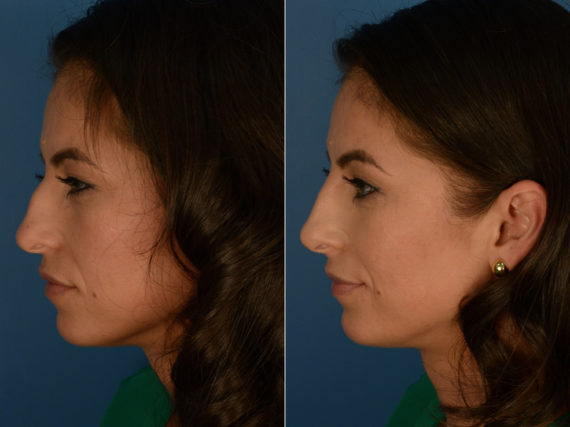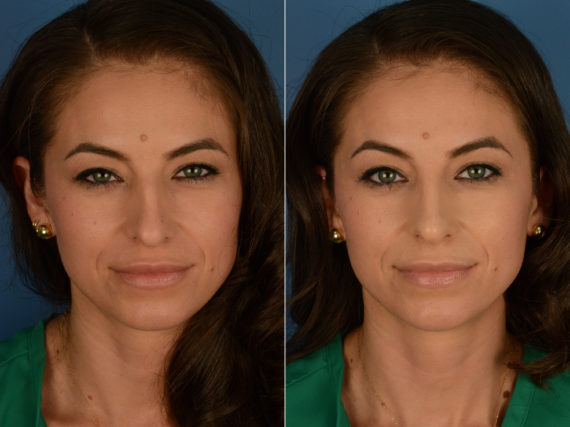Requests for non-surgical rhinoplasty, or a “non-surgical nose job,” have increased dramatically in the past couple of years. Non-surgical nose jobs, also known as filler rhinoplasty or injection rhinoplasty, are a less invasive and temporary method of improving the shape of your nose. This procedure is a viable alternative to traditional surgical rhinoplasty that was, until recently, the only option to alter the appearance of a patient’s nose.
At Aesthetic Surgery Center, we perform both non-surgical and traditional rhinoplasty methods and acknowledge that there are pros and cons for both. If you are considering a nose job, keep reading to learn the potential benefits and risks of both procedures so you can better decide which is right for you.
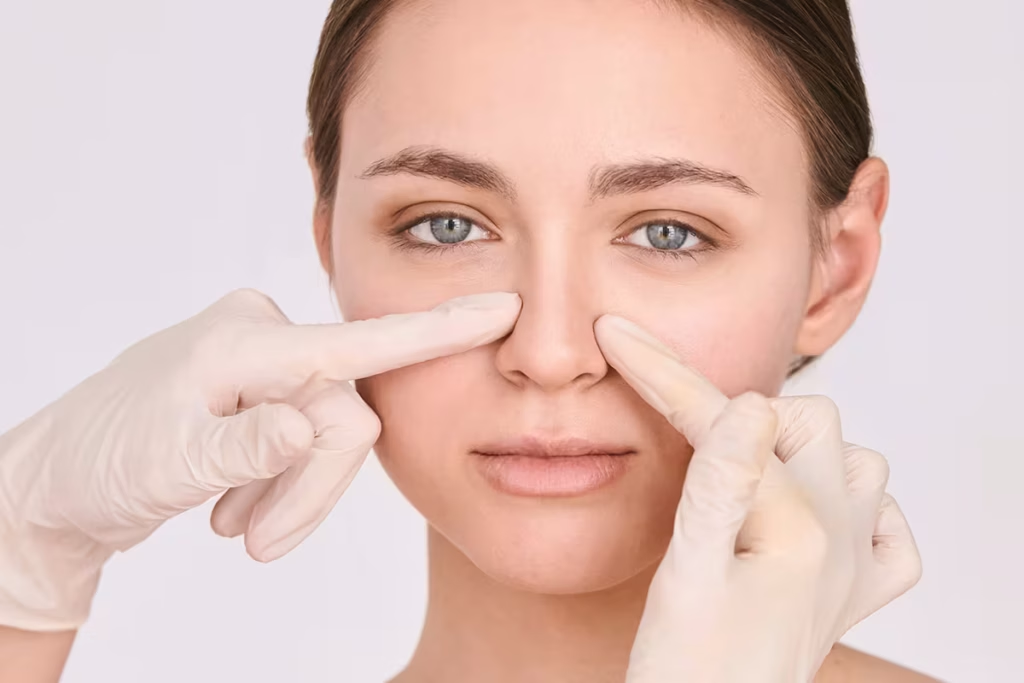
Nose Injection: Key Points
- What it is: A nonsurgical rhinoplasty that uses dermal fillers like Restylane or Juvederm to reshape the nose.
- How it works: Fillers are injected to smooth bumps, correct asymmetries, or refine nasal contours.
- Results: Immediate with minimal downtime; effects last 9–18 months.
- Ideal for: Those seeking subtle, temporary enhancements or testing changes before surgery.
- Recovery and safety: Quick recovery with minor swelling or bruising; risks are low when performed by a qualified professional.
What is Non-Surgical Rhinoplasty?
Non-surgical rhinoplasty is a term given to using injectable fillers such as Restylane, Juvederm, or Bellafill to change the shape of the nose. The many benefits of non-surgical rhinoplasty include a quicker recovery, a lower price tag, and the possibility of reversing the outcome.
The results are immediate and can be dramatic for some individuals. Mild swelling and bruising are both to be expected and usually only last a few days. Most fillers are temporary, which means the procedure needs to be repeated in the future, roughly twice a year, but this depends on how quickly an individual resorbs the product. If you don’t like the aesthetic result, hyaluronic acid fillers such as Restylane and Juvederm dissolve with hyaluronidase, an injectable dissolving enzyme.
Non-surgical rhinoplasty risks include:
Non-surgical nose jobs are primarily cosmetic procedures meant to tweak the shape and appearance of the nose. The temporary results and subtle changes of non-surgical nose jobs make them ideal for those with droopy tip, asymmetric nose shapes, and small nasal bumps.
Before & After Photos
* Each patient is unique and individual results may vary.
What is Surgical Rhinoplasty?
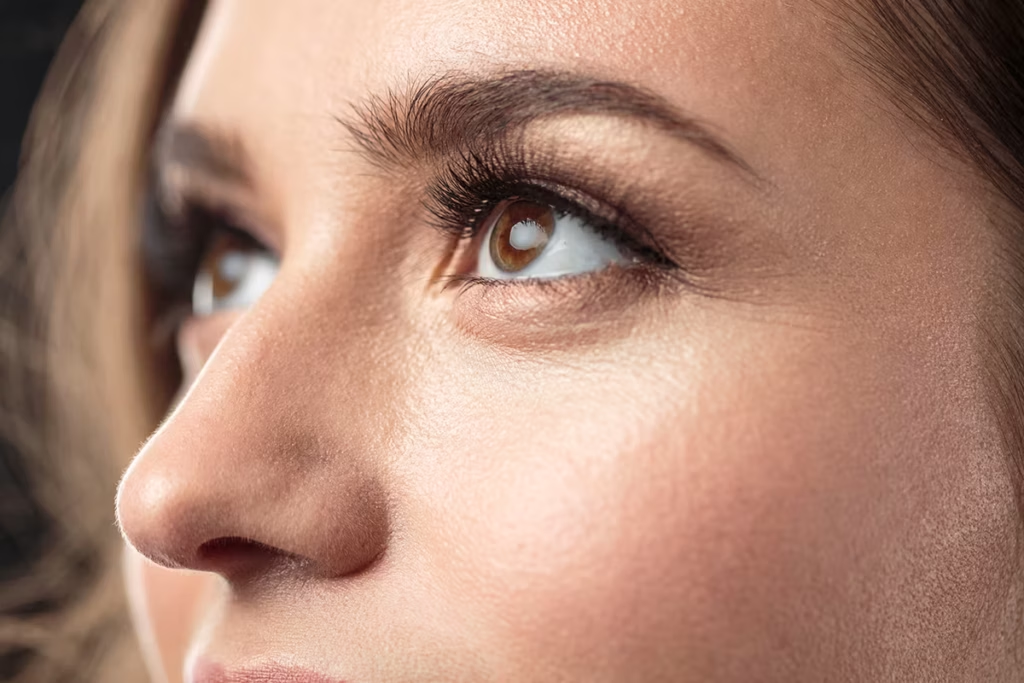
Surgical rhinoplasty naples fl has been a popular procedure for over half a century. This rewarding operation allows the surgeon to perform a more dramatic nose job than can be done with injectable fillers.
Traditional nose job Naples risks include:
Traditional rhinoplasty Naples is more than a cosmetic procedure. It can be used to correct breathing issues and completely reshape the nose. However, surgical rhinoplasty requires anesthesia, downtime of 1-2 weeks initially, and the possible need for revision surgery. A traditional nose job is best for those looking for long-term results and is willing to deal with a longer recovery and more intensive surgical procedure.
Benefits and Risks of Each Procedure
Non-surgical rhinoplasty is a popular procedure that uses dermal fillers such as Restylane, Juvederm, or Bellafill to change the shape of the nose. This type of nose job is also referred to as a “liquid nose job” and has many benefits, including less recovery time, lower cost, and the possibility of reversing the outcome if desired.
However, there are some risks associated with non-surgical rhinoplasty such as scar tissue formation from filler, bruising and swelling, vascular complications (blockage of blood vessels), blindness (rare), and skin necrosis or tissue death (rare).
Surgical rhinoplasty is another popular option for those seeking to improve their facial features. During this procedure, cosmetic surgeons can reshape crooked noses and refine nasal bridges to create more balanced facial appearances that meet patients’ aesthetic goals. While surgical rhinoplasty can be more effective in achieving desired outcomes than non-surgical methods due to its ability to address both cosmetic concerns and functional issues such as breathing difficulties, it is important for patients to be aware of the risks involved with this type of procedure. These include numbness or pain; infection; trouble breathing; adverse reactions to anesthetic; nasal septal perforation (a hole in the nasal septum); poor healing or scarring; discoloration and swelling; unsatisfactory nasal appearance; etc.
Ultimately when deciding between a surgical or nonsurgical rhinoplasty it is important for patients to discuss their aesthetic goals with their facial plastic surgeon so they can decide on which procedure best meets their needs. The decision should take into account potential risks vs benefits as well as an individual’s lifestyle demands since each option requires different levels of downtime after treatment is completed – non-surgical procedures are generally performed on an outpatient basis while surgical procedures require a longer recovery period afterward. Ultimately whether you choose a traditional or non-surgical method both procedures are designed to improve your nose structure and size in order to create a central feature on your face that complements your other facial features harmoniously.
Non-Surgical Versus Surgical Rhinoplasty
For people who only want subtle changes and are willing to undergo brief treatments about twice per year, a non-surgical filler rhinoplasty is a great option. It allows the patient to experiment with modifications to their nose with minimal risk and the ability to reverse the changes if necessary.
For those looking for a dramatic change and long-lasting results, however, surgical rhinoplasty in Naples Florida is the ideal solution. Traditional surgical rhinoplasty allows the surgeon to address more cosmetic and functional issues with less maintenance and great results.
However, if you do intend to eventually opt for traditional rhinoplasty, you must wait until all the filler has dissolved before scheduling surgery so that all surgical maneuvers and decisions can be made with the nose in its natural state.
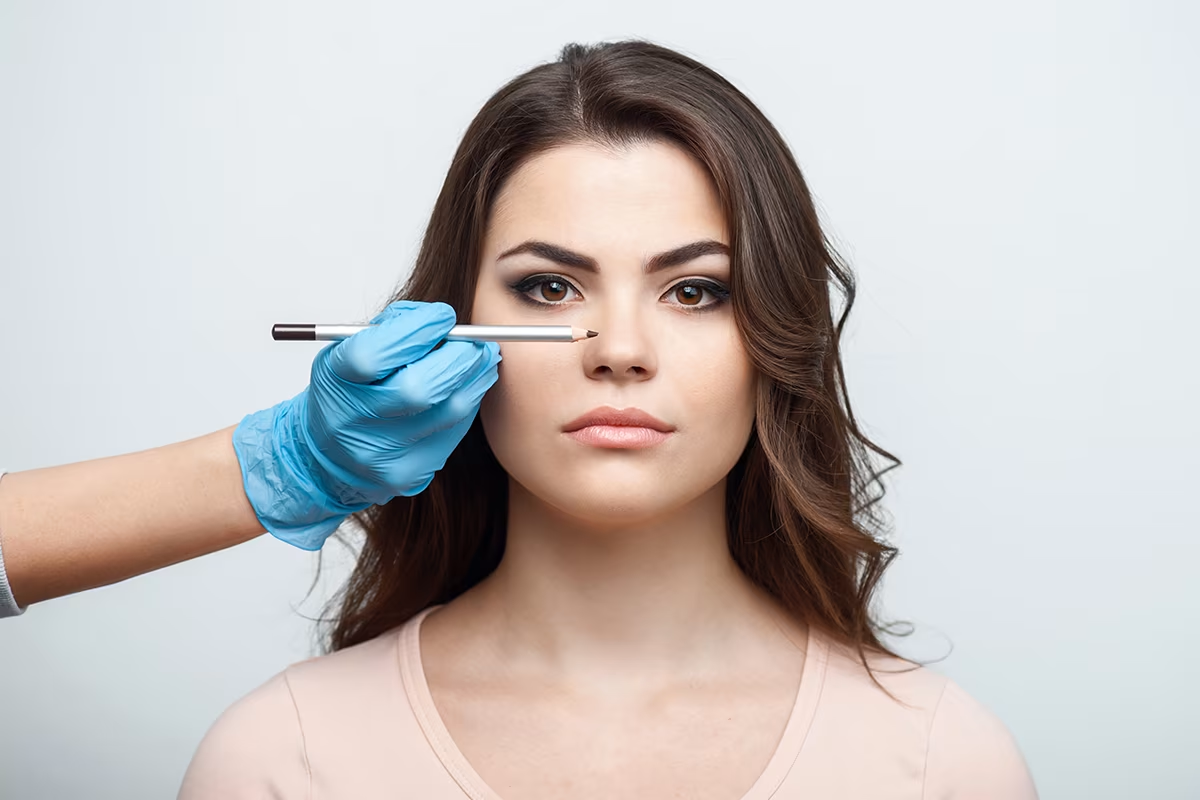
How Long Does Their Results Last?
The results of a surgical rhinoplasty are permanent, meaning that the changes made to the nose will remain after recovery is complete. The surgery can address issues such as correcting a deviated septum, removing nasal humps, and reducing or increasing nose size. In comparison, non-surgical liquid rhinoplasty provides temporary results from injections of fillers applied at various injection sites around the nose, which can last up to nine months depending on the type of filler used and how fast it metabolizes in the body.
Liquid rhinoplasty can also be used to improve nasal structure by creating a more balanced appearance, but it cannot correct issues related to nasal function as a surgical rhinoplasty can.
Ultimately, when deciding between a surgical or non-surgical treatment for your facial features it is important to discuss your aesthetic goals with your facial plastic surgeon so you can decide which procedure best meets your needs and lifestyle demands.
When Rhinoplasty is Necessary
Rhinoplasty is a facial procedure designed to address aesthetic concerns and medical issues related to the nose. Aesthetic rhinoplasty surgeries can be used to correct structural deformities, reshape or reduce the size of the nose, and improve the overall balance of facial features. In addition to aesthetic improvements, rhinoplasty can also improve nasal function by opening blocked airways (septoplasty) or correcting a deviated septum.
In certain cases, Rhinoplasty may be necessary if there are noticeable asymmetries in facial features due to trauma or birth defects. Depending on the severity of the deformity, corrective surgery may be necessary in order for the patient to achieve an aesthetically pleasing result as well as improved nasal function. Patients who have difficulty breathing through their noses due to a deviated septum may need surgical intervention in order to restore their airway and improve their daily quality of life with improved breathing ability.
It is important for patients considering plastic surgery procedures such as rhinoplasty to discuss their desired results with their facial plastic surgeon so they can decide what type of treatment best meets their needs. Each type of procedure has its own risks and benefits depending on individual lifestyle demands and aesthetic goals.
Which Procedure is Right for You?
A classic surgical rhinoplasty is a more dramatic procedure but can completely alter the shape of the nose and cure medical issues related to the nasal passage. Non-surgical rhinoplasty is a subtle first step for patients with smaller reconstruction requests or those who may be hesitant to proceed with a surgical nose job naples fl.
Ultimately, you need to decide which procedure you would rather invest in as you will ultimately live with the results. For an individualized recommendation, please call Aesthetic Surgery Center at 239-594-9100 to schedule a consultation in Naples, FL, with one of the best rhinoplasty surgeons in Florida.
